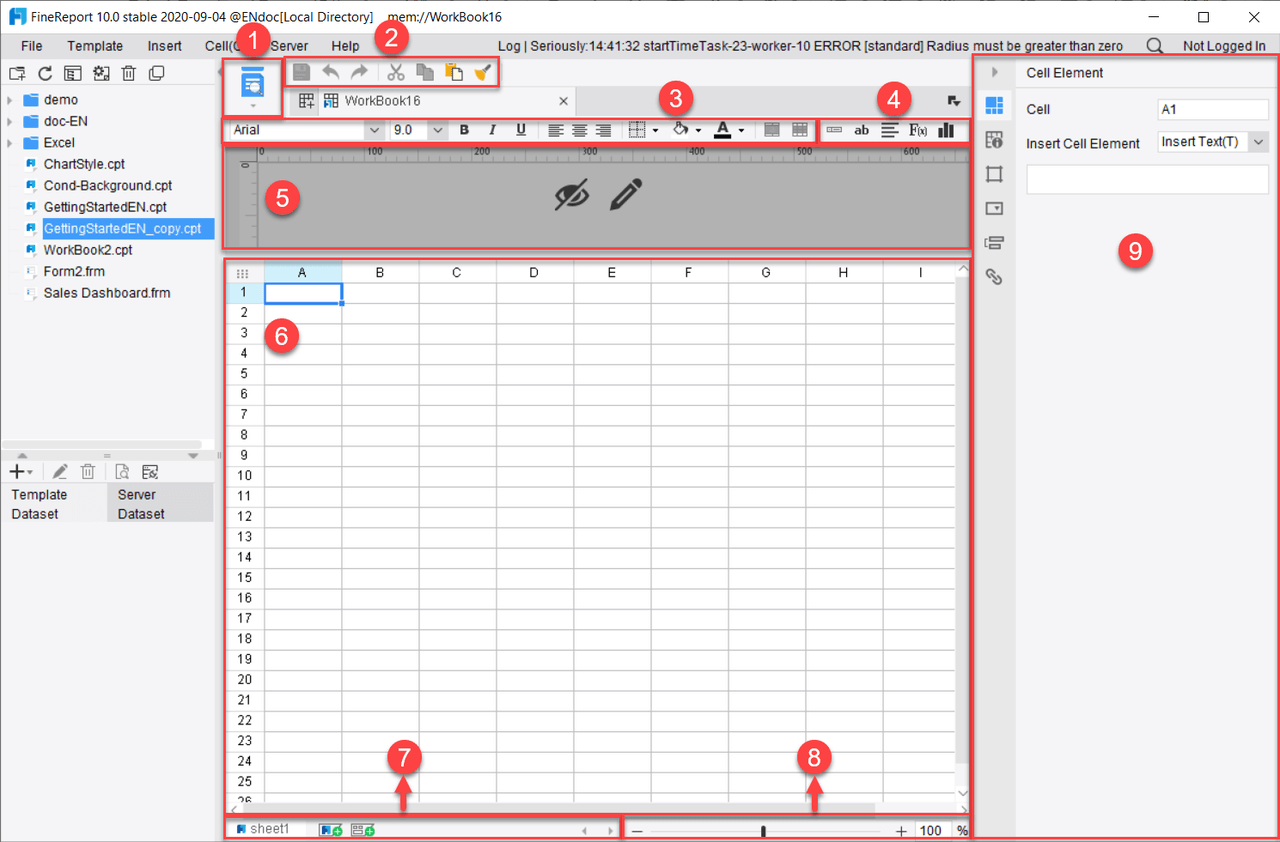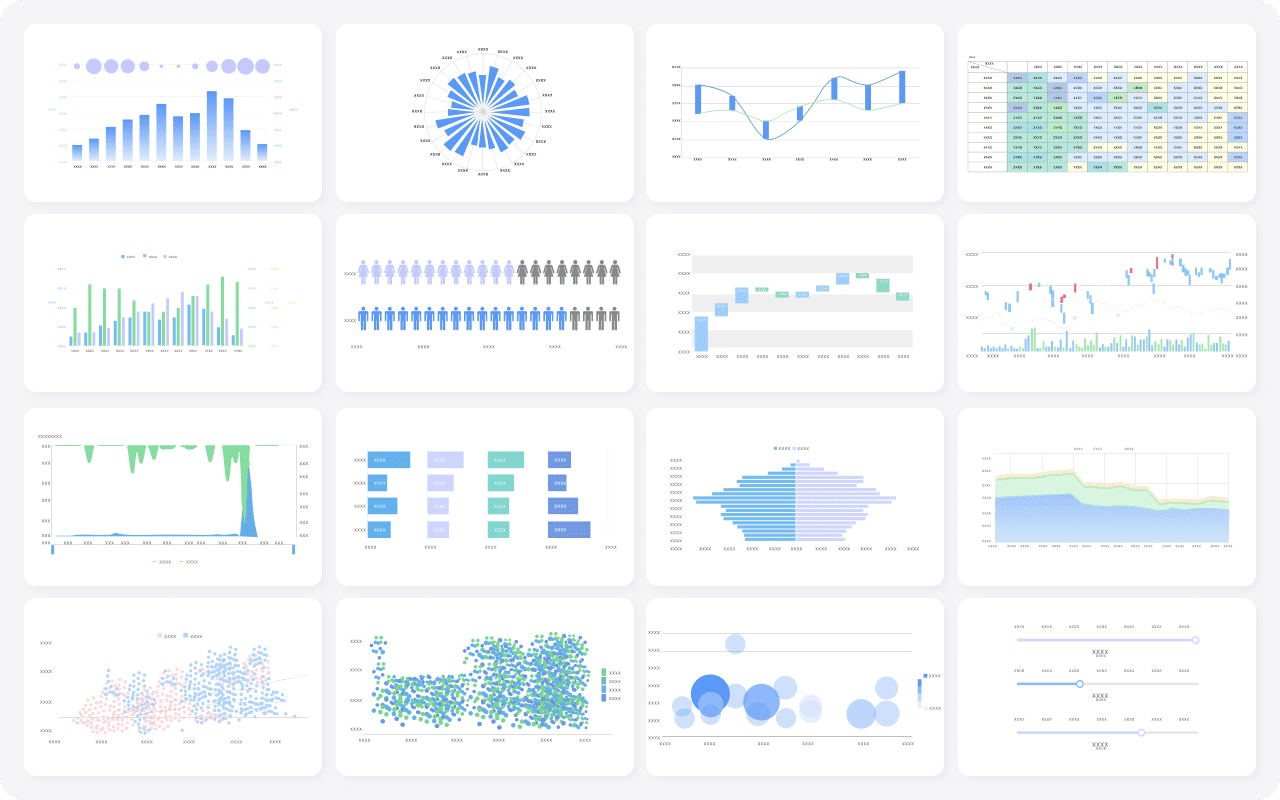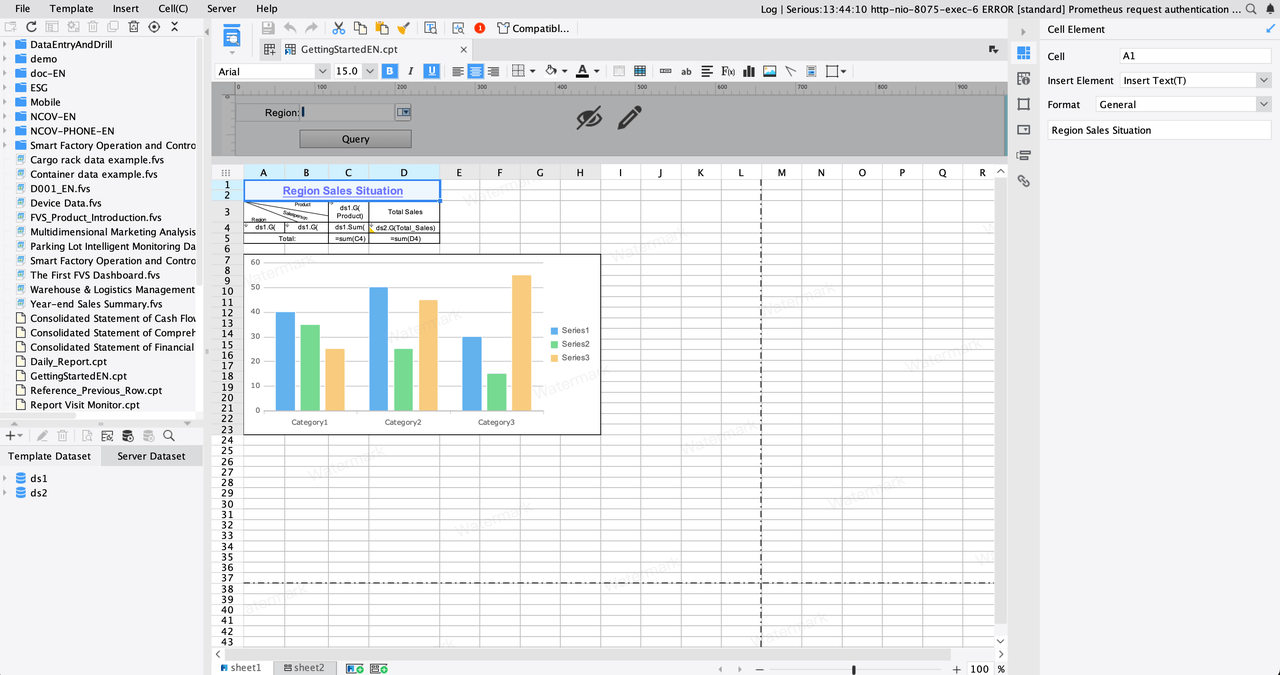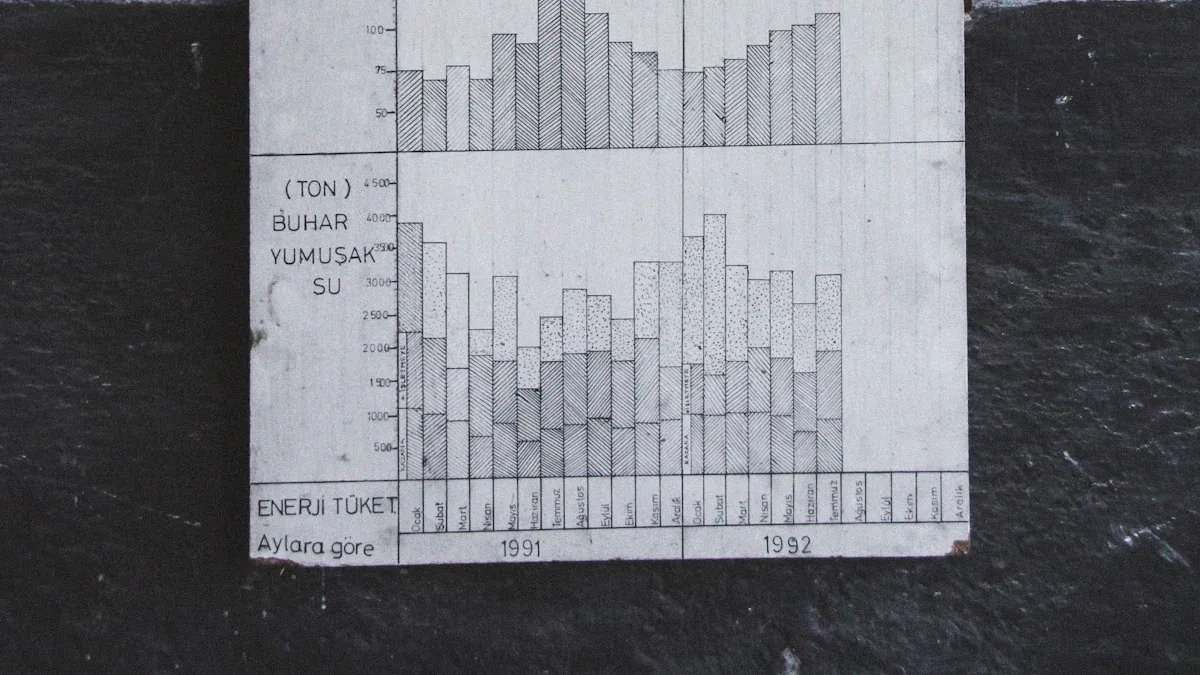A technical report gives you a clear way to share complex information and results. When you use a well-structured technical report, you help your team in Malaysia make better decisions. You can see this in real-world settings:
- Success metrics like defect IDs and summaries let you spot problems quickly.
- Clean formatting and simple language make these reports, which saves time and improves accuracy.
FanRuan and FineReport offer you practical solutions for creating technical reports, especially in business and manufacturing in Malaysia. With the right approach, you can master technical report writing and build reports that guide your team in Malaysia. If you want to see how this works, check out a technical report example to get started.
Key Takeaways
- Start your technical report with a clear structure including title, abstract, introduction, methods, results, discussion, conclusion, references, and appendices.
- Use simple language, short sentences, and clear headings to make your report easy to read and understand.
- Include visuals like charts, tables, and graphs to explain complex data and support your findings.
- Plan your report carefully by defining your purpose and audience before gathering information and creating an outline.
- Review and edit your report thoroughly by checking for errors, asking for feedback, and ensuring consistent formatting.
- Tailor your report to your readers in Malaysia by adjusting language and detail based on their background and needs.
- Use tools like FineReport to organize content, add dynamic visuals, automate formatting, and collaborate with your team in Malaysia.
- Avoid common mistakes such as skipping planning, using too much jargon, and neglecting proofreading to create clear and professional reports.
Technical Report Example
Key Elements
Every strong technical report includes key elements that improve clarity and professionalism. When you use these elements, you help your readers in Malaysia find information quickly and make better decisions.
- Clear Sections:
Use sections like executive summary, introduction, data analysis, findings, and recommendations. This layout improves readability and helps stakeholders find what they need. - Visual Aids:
Add tables, charts, and graphs to make complex data easier to understand. FineReport lets you create dynamic visuals that update in real time. - KPIs and Metrics:
Include key performance indicators (KPIs) to give a full view of performance. This supports smart decision-making in business and manufacturing in Malaysia. - Professional Formatting:
Use consistent fonts, headings, and spacing. FineReport’s templates help you keep your technical documentation neat and professional. - Logical Flow:
Arrange your information in a logical order. Start with the purpose, show your methods, present results, and end with conclusions and recommendations. - Actionable Insights:
Summarize your findings and suggest clear next steps. This shows professionalism and helps your team in Malaysia act on the report.
| Section | Purpose for Beginners in Malaysia |
|---|---|
| Abstract | Gives a quick summary of the report’s main ideas. |
| Introduction | Sets the scene and explains why the report matters. |
| Methods | Shows how you gathered and analyzed your data. |
| Results | Shares your findings with clear visuals. |
| Discussion | Explains what the results mean and why they matter. |
| Conclusion | Wraps up the report and suggests what to do next. |
| References | Lists your sources for credibility. |
| Appendices | Adds extra details or technical documentation. |
| Glossary | Defines technical terms for easy understanding. |
When you use FineReport and FanRuan, you can manage all these elements with ease. FineReport supports different report types, such as row reports, cross reports, and dashboards. You can connect to many data sources, automate report generation, and share your technical report example with your team in Malaysia on any device. In business and manufacturing in Malaysia, this means you can track equipment, monitor KPIs, and keep your technical documentation up to date without extra effort.
Note: A well-organized technical report with clear sections, visuals, and professional formatting builds trust and helps your audience in Malaysia understand your message. FineReport gives you the tools to achieve this, even if you are just starting out.
Technical Report Outline
A strong technical report outline helps you organize your ideas and present information in a logical order. When you create an outline, you set the stage for a clear and professional document. Most industry standards recommend that you structure the report with specific sections. These sections guide your reader in Malaysia from the purpose of the work to the final conclusions.
Here is a typical technical report outline you can follow:
- Title Page
Start with the title, your name, the date, and your organization. - Abstract
Write a short summary of the main points. This section gives readers in Malaysia a quick overview. - Table of Contents
List all the sections and page numbers. This helps readers find information fast. - Introduction
Explain the background, purpose, and scope of the technical report. - Background Theory
Provide any necessary theory or context. This section helps readers in Malaysia understand the technical details. - Methods
Describe how you collected and analyzed data. Use clear steps so others can repeat your process. - Results
Present your findings. Use tables, charts, or graphs to show data. Many types of technical reports use percent error or percent difference to compare results. These statistics help you discuss accuracy and show how your findings relate to the objectives. - Discussion
Interpret the results. Explain what the data means and discuss any sources of error. This section connects your findings to the goals of the technical report. - Conclusion
Summarize the main findings. Suggest next steps or recommendations. - References
List all sources you used. This adds credibility to your work. - Appendices
Add extra details, raw data, or technical documentation.
Industry guidelines suggest that you include sections like Results and Discussion. These sections let you present comparative data and discuss the accuracy of your findings. Using standard metrics, such as percent error, supports clear communication and helps your audience in Malaysia understand the value of your work.
FineReport makes it easy to organize these components. You can use templates for different types of technical reports, such as row reports, cross reports, and dashboards. FineReport supports multiple layouts, so you can display clear sections and visuals for any technical report. You can also connect to many data sources and automate report creation. This flexibility means you can focus on your content while FineReport handles the formatting.
When you use a technical report outline, you make sure every part of your document serves a purpose. You help your readers in Malaysia follow your logic and find the information they need. Whether you write for business, manufacturing, or another field in Malaysia, this outline gives you a solid foundation for any technical report.
Writing a Technical Report
Preparation Steps
Before you start writing a technical report, you need to plan carefully. Good preparation saves time and improves the quality of your work. Most experts agree that planning your report is one of the most important steps. You should always define your purpose and audience first. This helps you decide what information to include and how to present it.
Here are the key steps to follow when preparing:
- Identify the Problem or Topic
Decide what issue or question your report will address. Make sure you understand the problem fully. - Define Your Purpose and Audience
Think about who will read your technical report. Consider their background, needs, and expectations. This will guide your tone and the level of detail you use. - Gather Information
Collect data, facts, and examples from reliable sources. Interview experts if needed. Keep your notes organized. - Organize Your Sources
Use tools like spreadsheets or reference managers to track your sources. This makes it easier to create your references section later. - Create an Outline
List the main sections: title page, abstract, table of contents, introduction, methodology, results, discussion, conclusion, references, and appendices. This outline will guide you as you write. - Plan Visuals
Decide which charts, tables, or diagrams will help explain your data. Visual aids make complex information easier to understand.
Data preparation often takes up to 80% of the total effort in report writing. Investing time in this stage leads to more accurate and useful technical reports.
FineReport can help you during preparation. You can use its templates to set up your report structure and connect to different data sources. This makes it easier to organize your information and plan your visuals.

Drafting Sections
Once you finish planning your report, you can start writing the main body. Each section has a clear purpose. Use headings and subheadings to keep your content organized. Write in short, clear sentences. Avoid jargon unless you explain it.
- Title Page and Abstract
Start with a clear title. Write a short abstract that summarizes the main points. - Introduction
Begin with a hook to grab attention. Give background information and state the purpose of your technical report. Outline what the reader in Malaysia can expect. - Methods
Describe how you collected and analyzed your data. Be specific so others can repeat your process. - Results
Present your findings. Use tables, charts, and graphs to make your data easy to understand. FineReport lets you add dynamic visuals that update automatically. - Discussion
Explain what your results mean. Discuss any problems or errors you found. Connect your findings to the original goals. - Conclusion
Summarize the main points. Suggest next steps or recommendations. End with a strong statement. - References and Appendices
List all sources you used. Add extra details or raw data in the appendices.
When writing a technical report, always focus on analysis, brevity, and clarity. Use short sentences and precise words. This helps your readers in Malaysia understand your message quickly.
FineReport supports you in drafting by offering templates and formatting tools. You can use drag-and-drop features to add visuals and keep your formatting consistent. This saves time and ensures your technical report looks professional.
Review and Edit
After you finish your draft, you need to review and edit your technical report. This step is just as important as writing. Careful review improves accuracy, clarity, and overall quality.
Follow these steps for effective review:
- Self-Revision
Read your report aloud. Check for errors, unclear sentences, and awkward phrasing. Make sure each section flows logically. - Peer Review
Ask a colleague or subject-matter expert to review your report. They can spot mistakes you missed and suggest improvements. - Use Checklists
Go through a checklist to confirm you included all required sections, used consistent formatting, and labeled visuals correctly. - Test Usability
Make sure your report is easy to navigate. Check that headings, tables, and charts are clear and helpful. - Gather Feedback
Collect feedback from readers. Use their comments to improve your report. - Update and Finalize
Make necessary changes. Ensure your technical report is up to date and meets all guidelines.
Structured review and editing processes lead to higher quality technical reports. Metrics like readability scores, page views, and user feedback show that well-reviewed reports are easier to use and more helpful.
FineReport makes reviewing easier by allowing you to share drafts with your team in Malaysia. You can track changes, gather feedback, and update your report quickly. This collaborative approach ensures your technical report meets the highest standards.
Remember, writing a technical report is a process. Careful preparation, clear drafting, and thorough review help you create reports that inform and guide your audience in Malaysia.
How to Write a Technical Report
Identify Audience in Malaysia
When you start learning how to write a technical report, you need to know who will read your work. Understanding the purpose and audience helps you decide what information to include. If you write for engineers, you can use technical terms. If your readers in Malaysia are managers, you should use simple language and focus on results.
Ask yourself these questions:
- Who will read this technical report?
- What do they already know?
- What do they need to learn from your report?
Tailoring the report to the audience in Malaysia makes your writing more effective. You show respect for your readers in Malaysia and help them get the information they need. FineReport can help you customize your report for different groups. You can use templates and adjust the level of detail for each audience.
Tip: Always keep your readers in mind. This will guide your word choice, visuals, and the depth of your explanations.
Organize Content
Good organization is key when you want to know how to write a technical report. You should arrange your ideas in a logical order. Start with an introduction that explains the topic. Follow with sections like methods, results, and discussion. End with a clear conclusion.
Here is a simple way to organize your technical report:
| Section | What to Include |
|---|---|
| Introduction | Purpose and background |
| Methods | Steps you followed |
| Results | Data and findings |
| Discussion | What the results mean |
| Conclusion | Main points and next steps |
Use headings and subheadings to break up your text. This helps readers find information quickly. FineReport offers templates that keep your organization clear and professional. You can drag and drop sections to match your outline.
Note: A well-organized technical report saves time for both you and your readers in Malaysia.
Use Visuals
Visuals make your technical report easier to understand. Charts, tables, and diagrams show data clearly. When you learn how to write a report, you should use visuals to highlight key points.
FineReport lets you add dynamic charts and tables with just a few clicks. You can update your visuals in real time. This is helpful in business and manufacturing in Malaysia, where data changes often.

Here are some tips for using visuals:
- Choose the right type of chart for your data.
- Label all visuals clearly.
- Keep visuals simple and easy to read.
Remember: Visuals are not just decorations. They help explain your findings and support your conclusions.
When you follow these steps, you will master how to write a technical report. You will create documents that are clear, organized, and useful for your audience in Malaysia.
Proofread
Proofreading is the final step before you share your technical report. You want your report to be clear, accurate, and professional. Careful proofreading helps you catch mistakes and improve your writing. When you proofread, you make sure your message is easy to understand.
Start by reading your report slowly. Look for spelling errors, grammar mistakes, and typos. Read each sentence out loud. This helps you notice awkward phrases or unclear ideas. If a sentence sounds confusing, rewrite it in a simpler way.
Check your formatting. Make sure your headings, bullet points, and tables look neat. Consistent formatting makes your report easier to read. FineReport can help you keep your formatting clean. Use its templates to create reports with the same style every time.
Review your visuals. Look at your charts, tables, and diagrams. Make sure each one has a clear label and matches the data in your report. If you use FineReport, you can update visuals quickly. This keeps your information accurate and up to date.
Ask someone else to review your report. A fresh set of eyes can spot mistakes you missed. They might find unclear sections or missing details. Peer review is common in business and manufacturing in Malaysia. It helps you create better reports and avoid costly errors.
Use a checklist to guide your proofreading. Here are some items you can include:
- Did you check for spelling and grammar mistakes?
- Are all headings and sections in the right order?
- Do all visuals have labels and match the data?
- Is the formatting consistent throughout the report?
- Did you include all required sections?
Tip: Take a break before proofreading. When you return, you will see your work with fresh eyes.
FineReport makes collaboration easy. You can share your draft with your team in Malaysia and collect feedback in one place. This helps you improve your report before you send it out.
Proofreading is a key part of how to write a technical report. It shows you care about quality and helps your readers trust your work. When you proofread carefully, you deliver reports that make a real impact.
Tips for Beginners in Malaysia
Clarity
You need to focus on clarity when you write a technical report. Clear language helps your readers understand your ideas quickly. Always use short sentences and simple words. Avoid jargon unless you explain it. If you want to improve writing clarity, read your report out loud. This helps you spot confusing phrases. Use headings and bullet points to organize your thoughts. When you present data, choose visuals that make your points easy to see. FineReport gives you templates that support clarity of information. These templates guide you to structure your report in a logical way. You can use them to highlight key findings and make your technical accuracy stand out. Remember, clarity builds trust with your audience in Malaysia.
Consistency
Consistency is another important part of a high-quality technical report. You should use the same style for headings, fonts, and spacing. This makes your document look professional. Stick to the same format for tables and charts. FineReport’s validation features help you keep your data and formatting consistent. When you use these tools, you reduce errors and improve technical accuracy. Always check that your visuals match the data in your text. Consistency also means using the same terms for the same ideas throughout your report. This helps your readers follow your logic. If you follow general guidelines for formatting, your technical report will look polished and reliable.
Common Mistakes
Many beginners in Malaysia make the same mistakes when writing a technical report. One common error is skipping the planning stage. You should always outline your sections before you start writing. Another mistake is using too much technical language without explanation. This can confuse your readers. Forgetting to proofread is also a problem. Proofreading helps you catch mistakes and improve technical accuracy. Some writers ignore general guidelines for structure and formatting. This makes reports hard to read. You can avoid these pitfalls by using resources for writing a technical report, such as FineReport’s templates and validation tools. These resources for writing a technical report help you check for errors and maintain a high-quality technical report. If you follow these tips for writing a technical report, you will create documents that are clear, accurate, and easy to understand.
Tip: Use a checklist based on general guidelines before you submit your report. This ensures you cover all the tips for writing a technical report and avoid common mistakes.
FanRuan and FineReport Use Case
Manufacturing Example
You can see how FineReport works in real-world manufacturing by looking at companies like Kintetsu World Express (China). This company needed a better way to manage production and equipment data. They built the Kintetsu Business Reporting (KBR) system using FineReport. With this system, you can bring together information from many sources. You get real-time dashboards that show how production is going. Sales and production teams in Malaysia now have access to customer and operational data that was hard to find before. This change helps everyone make faster and smarter decisions. The system also improves how you manage technical documentation, since all the important data is in one place and easy to use.
Another example comes from MuYuan Foods Co., Ltd., a large company in agriculture and manufacturing. They used FineReport and FineBI to solve problems with slow data and reporting. Before, it took up to 10 minutes to get answers from their reports. Now, with FineReport’s advanced data engine, you can get results in under 3 seconds. Each department can look at their own data and make decisions quickly. This setup keeps your technical documentation up to date and makes sure only the right people see sensitive information. You can trust that your reports are always supported by data, which builds confidence in your decisions. Here is an interactive demo created by FineReport, click to experience it.
Equipment Management Reports
When you manage equipment in manufacturing, you need clear and accurate technical documentation. FineReport gives you tools to create reports that track equipment status, maintenance schedules, and performance. You can connect data from sensors, machines, and business systems in Malaysia. This means you always have the latest information about your equipment.
With FineReport, you can automate report creation. For example, you can set up the system to send out daily or weekly equipment reports without extra work. You can also use dashboards to see trends, spot problems early, and plan maintenance before something breaks. The visual tools help you turn complex data into simple charts and tables. This makes your technical documentation easy to read and share with your team in Malaysia.

You can also use FineReport to keep a record of repairs, inspections, and spare parts. This helps you avoid mistakes and keep your equipment running smoothly. When you use these features, you make your manufacturing process more efficient and reliable. Everything you do is supported by data, so you can show proof of your work and meet industry standards. Here is an interactive demo created by FineReport, click to experience it.
Tip: Use FineReport’s templates to standardize your technical documentation. This saves time and ensures every report looks professional.
You now know the key steps for writing a technical report. Start with a clear outline, use visuals, and always include a bibliography. FineReport helps you organize your data and create reports quickly. When you write, remember to add a bibliography for every source. A strong bibliography builds trust in your work. Try using the example and tips in your next report. For advanced reporting in business or manufacturing in Malaysia, explore FanRuan and FineReport. Keep improving your technical reports and always check your bibliography.
Click the banner below to try FineReport for free and empower your enterprise to transform data into productivity!
Continue Reading About Technical Report
What is an Audit Report and Why It Matters
Medical Report Services in Malaysia: What You Need to Know
FAQ

The Author
Lewis
Senior Data Analyst at FanRuan
Related Articles

Understanding The Types of Tables in Data Management
Types of tables in data management include data, relational, decision, HTML, and pivot tables, each serving unique roles in organizing and analyzing data.
Lewis
Oct 13, 2025

What Columns VS Rows Means in Data Tables
Columns vs rows in data tables: columns organize data by attribute vertically, while rows store individual records horizontally for clear analysis.
Lewis
Oct 12, 2025

Oracle Reporting Tools and Their Key Functions
Oracle reporting tools offer real-time analytics, custom dashboards, and secure data integration for efficient business decision-making.
Lewis
Sep 25, 2025




